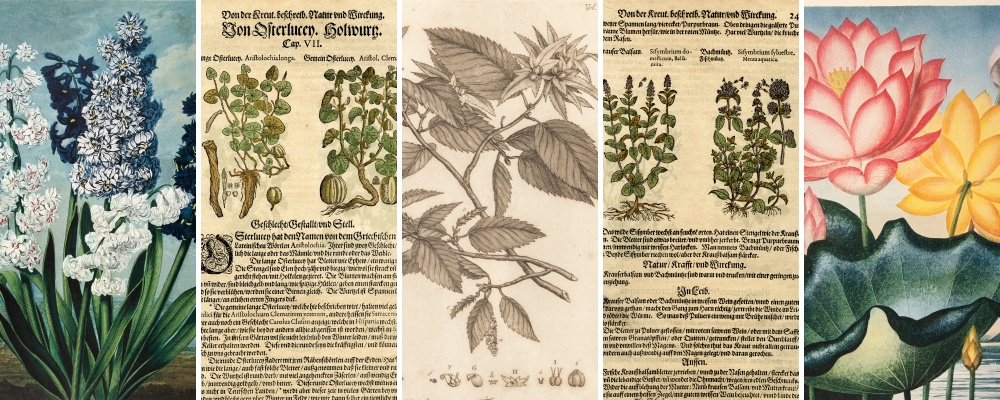Blog
The Gap Between Art and Science: Botanical Illustrations
September 01, 2023

Image details (left to right): Temple of Flora: Hyacinths,
Thomas Warner and Sydenham Teak Edwards, lithograph, 2010.87.08.
Ariftolochialonga, Artist Unknown, lithograph, circa 1700,
2020.1.487b. The Hornbeam Tree, John Miller, lithograph,
1776, 2000.389.1b.
Sifymbrium domefticum, Balfamita, Artist Unknown, ca 1700,
L11.2022.467.
Temple of Flora: The Sacred Egyptian Bean, lithograph, 2010.87.34.
"The aim of botanical illustration is to produce not only a
picture that is pleasing to the eye but one which is botanically
accurate, comprehensive and recognizable to species level. Such
works broach the gap between art and science." - Rosemary
Wise - Botanical Illustrator, Oxford Botanical Garden
A botanical illustration is an accurate pictorial depiction of plants and plant traits for a scientific purpose that illustrates a plant’s form, color, and details. Prior to the invention of photography, a botanical illustration was the only way of visually recording the world’s many species of plant life. While today’s science books are full of highly detailed photographs, it was artists and illustrators who were depended upon to share the beauty of botany from around the world. These artists and illustrators were required to not only poses great artistic skills and an eye for detail but also have technical horticultural knowledge.
The practice of creating these images can be traced back to between 50 and 70 BCE when an illustrated book, "De Materia Medica," was created by Greek botanist Pedanius Dioscorides to create a guide identifying plant species for medicinal purposes. Later in the 18th century, many advances in the printing process allowed for more colorful and detailed drawings. Botanical artists of the time were often employed by large gardens, such as the Royal Botanic Gardens of the United Kingdom to record their botanical collections or traveled with explorers to map and record the natural flora in different countries.
The original "Temple of Flora," the third installment in
the larger series of "New Illustration of the Sexual System of
Carolus von Linnaeus,” was published in 1799-1807. The project was
personally funded and published by Dr. John Thornton as a response to
recent discoveries made about floral reproduction by naturalist Carl
Linnaeus. The series represents flowers from around the globe in their
native habitats. Thirteen engravers reproduced paintings and drawings
by botanical artists. The GVSU Art Gallery collection has a modern
reproduction of this series of images in their collection, many of
which are on display in the P. Douglas Kindschi Hall of Science.
To see more from the "Temple of Flora" series, visit: https://artgallery.gvsu.edu/Search/objects/search/2010.87.%2A
